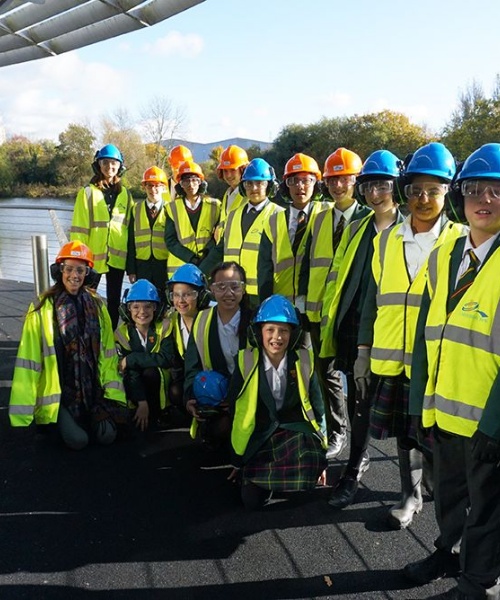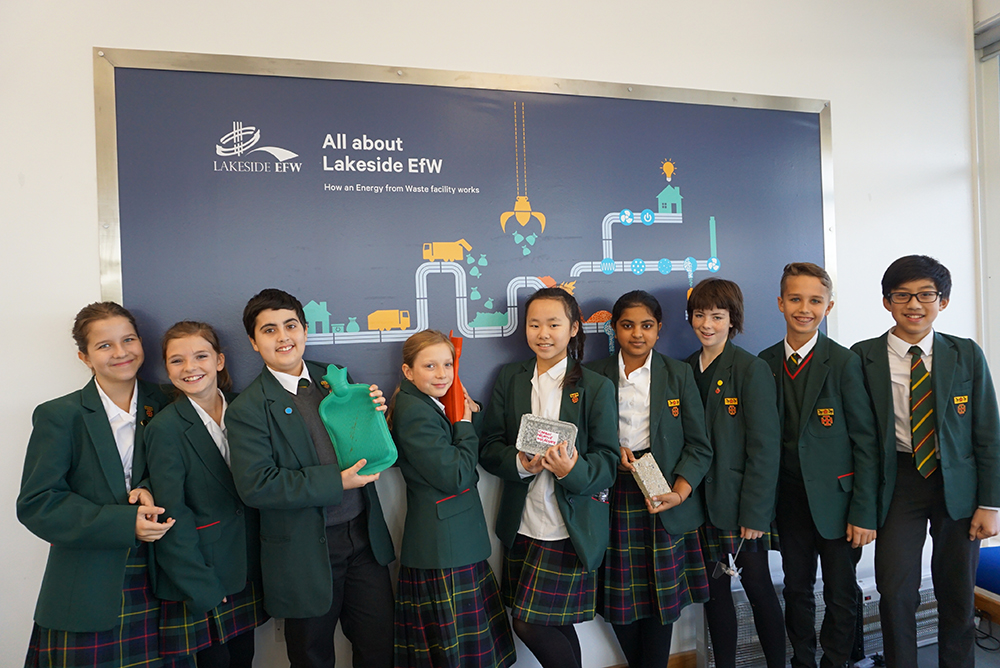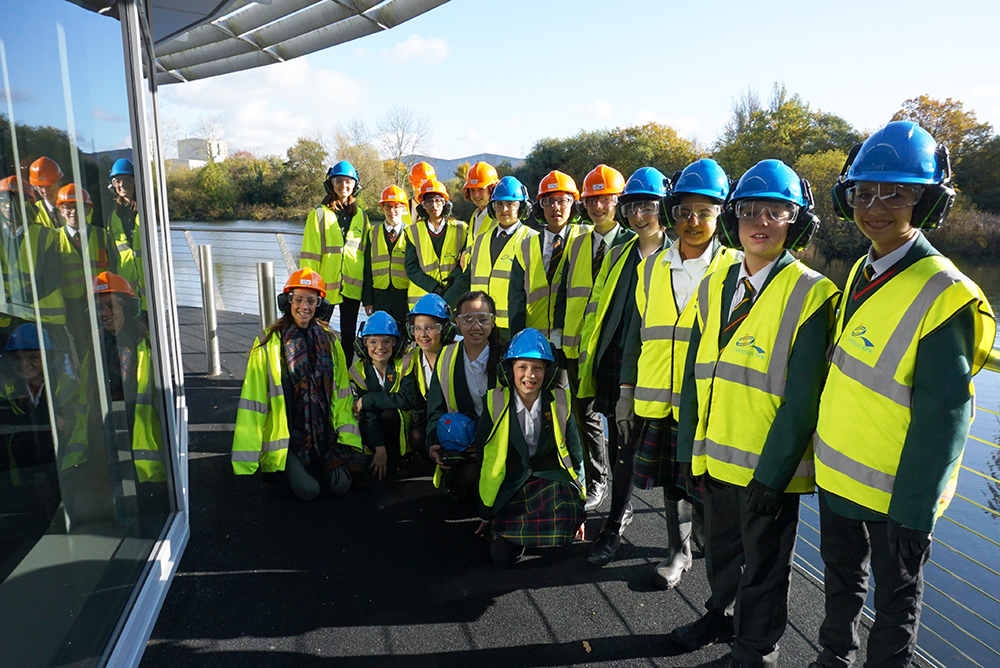Reduce, Reuse, Recycle, Recover: Eco Club Explore Green Energy

St Benedict's Eco Club visited Lakeside Energy from Waste Ltd this term, which turns non-recyclable waste into power.

Jamie White (Lower 6th) reports:
Eco Clubs play a vital role in creating environmental awareness amongst the future generation. The Eco & Geography Club at St Benedict’s is a mixture of pupils from Form 3 (Year 7) right up to the Sixth Form and meets every other Tuesday to discuss recent environmental issues both locally and in the wider world.
On Thursday 7th of November, members of the school Eco Club visited the Lakeside Energy from Waste facility at Colnbrook near Heathrow airport. Lakeside Energy from Waste Ltd is a joint venture between Grundon Waste Management, the UK's largest family owned waste management company, and Viridor, which is one of the biggest resource management companies in the UK.
Our first activity on the trip was to cross the metal drawbridge to the Lakeside Education Centre, which floats like a modernist island building in the middle of a lake, surrounded by beautiful countryside. After a brief introduction to this very impressive site, we then participated in activities in their Education Centre, designed to teach us how to sort out household rubbish more effectively, so that only non-recyclable waste is sent to the Energy from Waste plant to be turned into sustainable energy.

The second part of the visit provided an opportunity for the students to dress up in safety gear – bright yellow jackets, goggles and hard hats - and walk across to the control room to see the giant grabs in action. The control room is at the heart of the Energy from Waste operation. Here we watched the giant crane grab swing into action – moving the weight of waste into the feed hoppers at the start of the combustion process. Each grab can hold up to 9 tonnes of non-recyclable rubbish (which is approximately the weight of an adult Tyrannosaurus Rex!) The grabs load the rubbish into the burn chambers – huge furnaces where it is completely burned at around 1000°C which is the same temperature as lava when it erupts from a volcano. The result of all of this is less landfill and more energy, and the residue of ash and stony aggregate is used for fertilizer and road building.
We learnt why it is so important for us to “put the right stuff in the right bin” and how we can improve recycling and energy efficiency in our school and our own homes. Students were taught about the Waste Hierarchy (Reduce > Reuse > Recycle > Recover) and the combustion flow process. 95% of the plant input is recycled or converted to energy and is primarily used as electricity for homes. We also learnt that the plant here is 1 out of 400 Energy from Waste plants across Europe.
Put simply, Energy from Waste is the vital step between recycling and landfill. It turns rubbish into power. The plant we visited employs around 77 people and uses advanced technology to process over 450,000 tonnes of residual waste per year, generating 37 mega-watts of power which is enough to provide electricity to every household in Slough (56,000 homes). The huge site itself cost £160 million pounds to develop and is one of the most sophisticated facilities of its type in Europe.
On behalf of all of the members of St Benedict’s school Eco club, I would like to thank Mrs Dale and Mr Walton for organising and planning this eye-opening trip, and to Miss Hutchinson and Miss Watson for making the trip run smoothly and a great success.